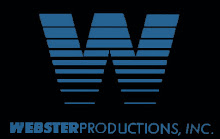This one comes to us from Hubspot Consultant Shaun Pinney.
1. Page Load Time
How fast do your pages load? What can you do to increase the speed of your web pages? Google recently added Site Performance to Webmaster Tools. This tool lets you view your page load time and compare it against average page load times across the web. Fast loading pages may have a positive effect on how quickly and often your site is crawled and indexed. Users expect a fast web browsing experience and pages that load fast are likely to earn more retweets, links and sharing than slower pages. Begin using Site Performance today or try the web page speed optimizer tool.
2. Optimizing Images for the Web
Optimization of the images on your site can lead to faster loading pages and a better user experience. Not only that, but optimized images cut down on wasted bandwidth on servers and speed up the load time of your site. All of this could lead to visitors spending more time on your site, viewing more pages.
JPEG and GIF are two common file types used on the web. JPEG's are typically reserved for photos and GIF's are for graphics. If you have access to PhotoShop, you can quickly edit images and graphics. Adjust the file size and the number of colors of the image. Be sure to limit the file size without downgrading the photo quality. It's better to load a slightly larger image than one that is smaller in size but blurry.
3. Custom Thank You Pages
Providing your audience with compelling calls to action is the key to turning qualified traffic into leads. Marketers spend a lot of time crafting offers and building landing pages, custom thank you pages are just as important. Here are some best practices to get you started with your own thank you pages.
- The design and navigation should mirror the rest of your site.
- Thank the user for filling out the form and let them know when they can expect a response.
- Include links to related content, (blog, social media sites, etc)
- Example of a HubSpot thank you page.
4. RSS & Feedburner
RSS (Really Simple Syndication) is the best way to broadcast your blog, video or other web content across the internet. Visitors who use an RSS Reader can subscribe to a feed of your content. Once subscribed, users get new articles sent to their RSS reader. This makes it easy for the user to follow multiple blogs without needing to navigate back to your blog or web site each time. Additonal RSS education is available if you would like to learn more.
Feedburner is a web feed management tool that provides custom RSS feeds to content producers. If your host your blog on WordPress you should setup a Feedburner account to track subscribers and collect data. You can track the number of RSS & email subscribers to your blog each day. Learn more about Feedburner setup and get started tracking your feed.
5. Flash
There has been a lot of debate about Flash and if it's search engine friendly or not. In 2008, Google came out and said they had made it easier for GoogleBot (Google's web crawler) to crawl flash content.
This announcement by Google was a step in the right direction, but B2B websites should still use Flash sparingly. You should be striving to make it as easy as possible for Google to crawl and index your content and it's simply not as easy for Google to crawl content within Flash elements. There are many reasons to create text based content instead of Flash, including:
- With Flash, basic Search Engine Optimization elements are often missing (H1 tags, anchor text, image alt tags & title tags)
- Often Flash content is only linked to from other Flash based content. Inbound links and internal links may not be fully counted and given credit for. This is a major issue, as Google values a majority of your sites authority on the quality and quantity of inbound links.





No comments:
Post a Comment